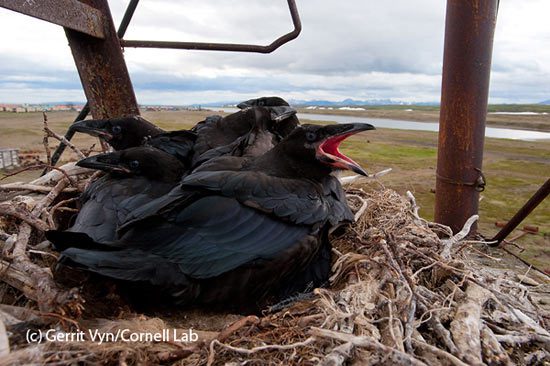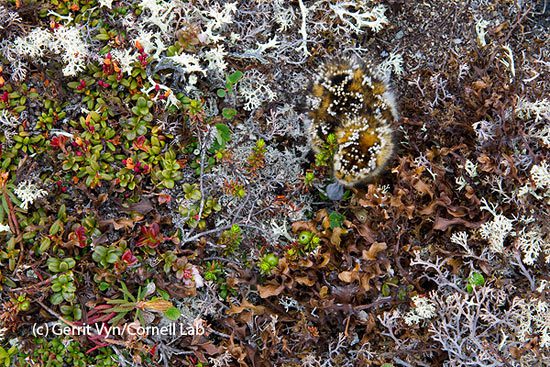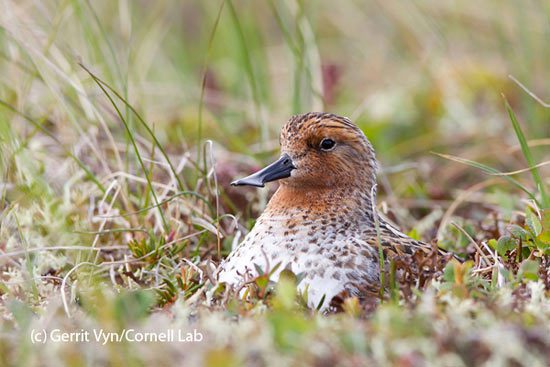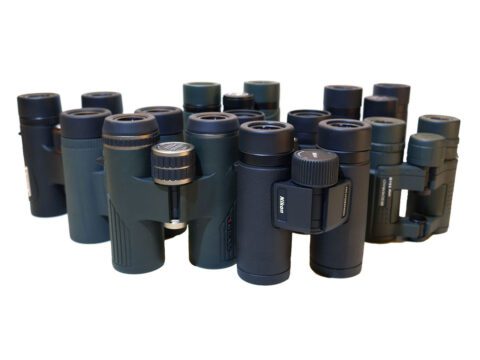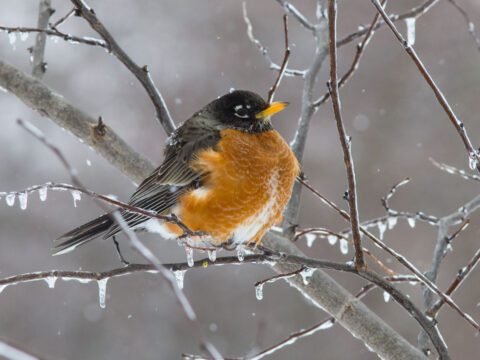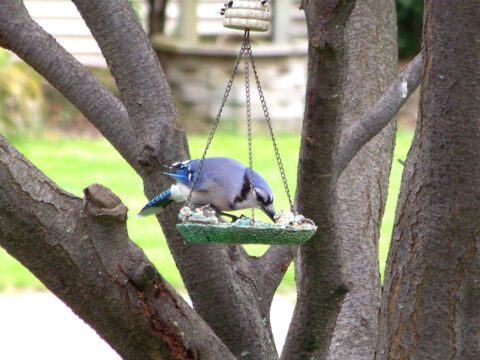Surprise! Sandpiper chicks emerge from the Russian lichens
Text and images by Gerrit Vyn, Cornell Lab producer July 19, 2011
Sandpiper chicks aren't the only ones—these Common Raven chicks are growing up, too. 
Can you find the Spoon-billed Sandpiper chick? Hint: Look for the bill. 
A male Spoon-billed Sandpiper takes his turn incubating a clutch of eggs.
From here on out, each time I see a Spoon-billed Sandpiper I wonder if it will be my last for the season. Most of the adults who failed to breed have departed and the few that remain are quietly leading hungry, growing chicks through a landscape under constant aerial surveillance by predatory gulls, jaegers and ravens.
One male whose territory was closest to the village and was especially confiding has departed. He was the first spoonbill I filmed and the first known arrival, on June 3. We sat together in cold pelting rain that day and I filmed him several more times in the weeks that followed. I regret not having gone to see him one last time before he left.
In early July the last nest I knew about was due to hatch. The weather was not ideal—almost constant 30–40 mph winds—but over the course of several days I was able to capture the first intimate footage and sounds of Spoon-billed Sandpipers at their nest. I filmed adults incubating and brooding the young, the young spoonbills’ emergence from the nest, and their first stumbling attempts at capturing prey.
I also recorded several interesting vocalizations including a rousing series of calls given by the pair during an incubation exchange (males sit on the nest during the day and females at night) and a quick jrrrrt call that is used by the adults to freeze their well-camouflaged chicks in their tracks so they avoid detection by predators. It was difficult to watch the young depart the nest for the last time. Their tiny bodies look so vulnerable in the seemingly unforgiving landscape—it’s a wonder that any of them survive.
A few days later I went to an area we had searched without success for Spoon-billed Sandpiper nests. I was hoping to film an Emperor Goose nest, but it too had hatched and the family departed. Amazingly, an adult Spoon-billed Sandpiper popped out of the tundra delivering that jrrrrt call to warn their chicks of danger. I stood back and after some time four puffball chicks on spindly legs emerged from various spots and began making their way over the lichens and willows to the adult. They were no more than a day off the nest. It was somehow refreshing to know that at least one nest had existed unbeknownst to us.
My time in Chukotka is winding down and this will likely be my last blog post. Next week I’ll begin the long journey back to the States—first, three rugged days overland by Vezdehod (imagine a home-made armored personnel carrier) during which we’ll do the first ornithological surveys of several remote mountain valleys. Then a boat ride from the town of Beringovsky to Anadyr through waters rich with Beluga whales and seabirds. And finally the long flights through Moscow and New York to Seattle. Capturing part of the life of the Spoon-billed Sandpiper has been a success and a great adventure, but I am definitely looking forward to being back home. Thanks to everyone who followed along!

All About Birds
is a free resource
Available for everyone,
funded by donors like you
American Kestrel by Blair Dudeck / Macaulay Library
